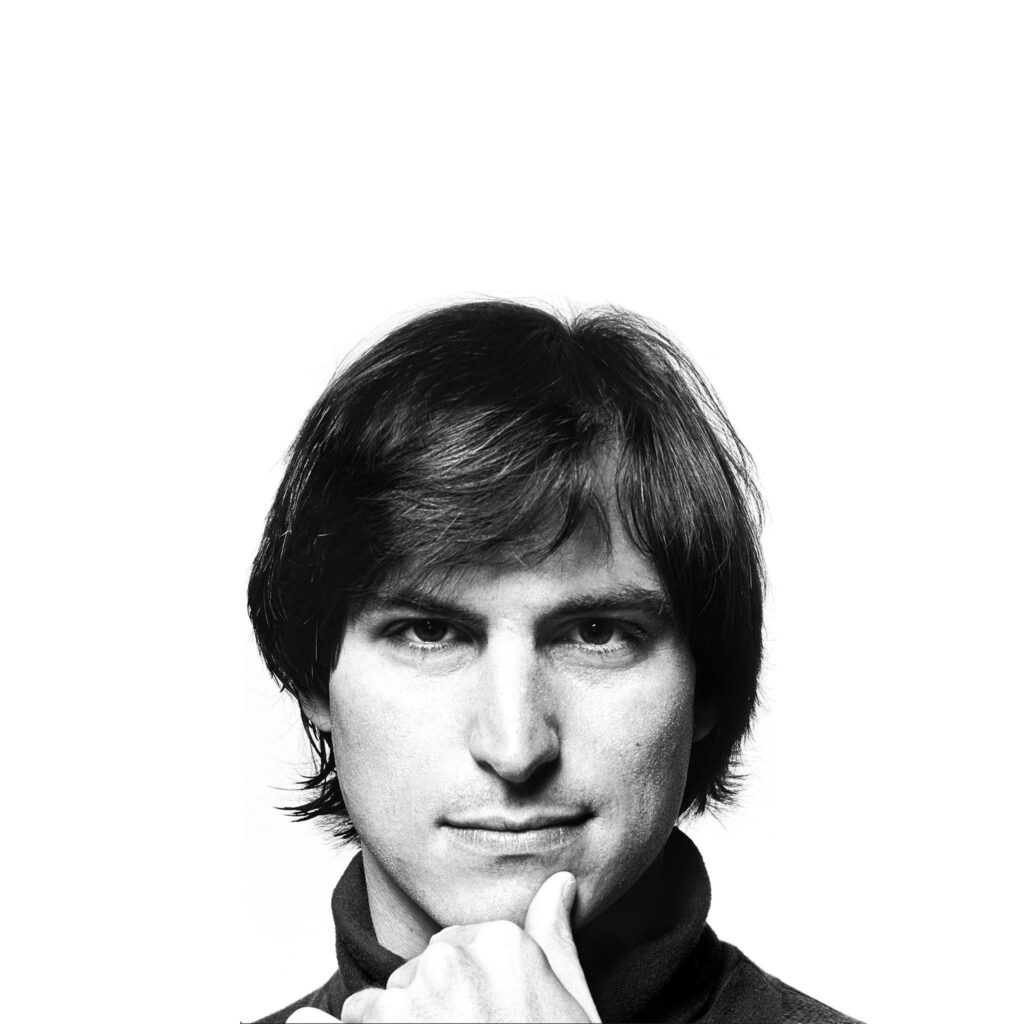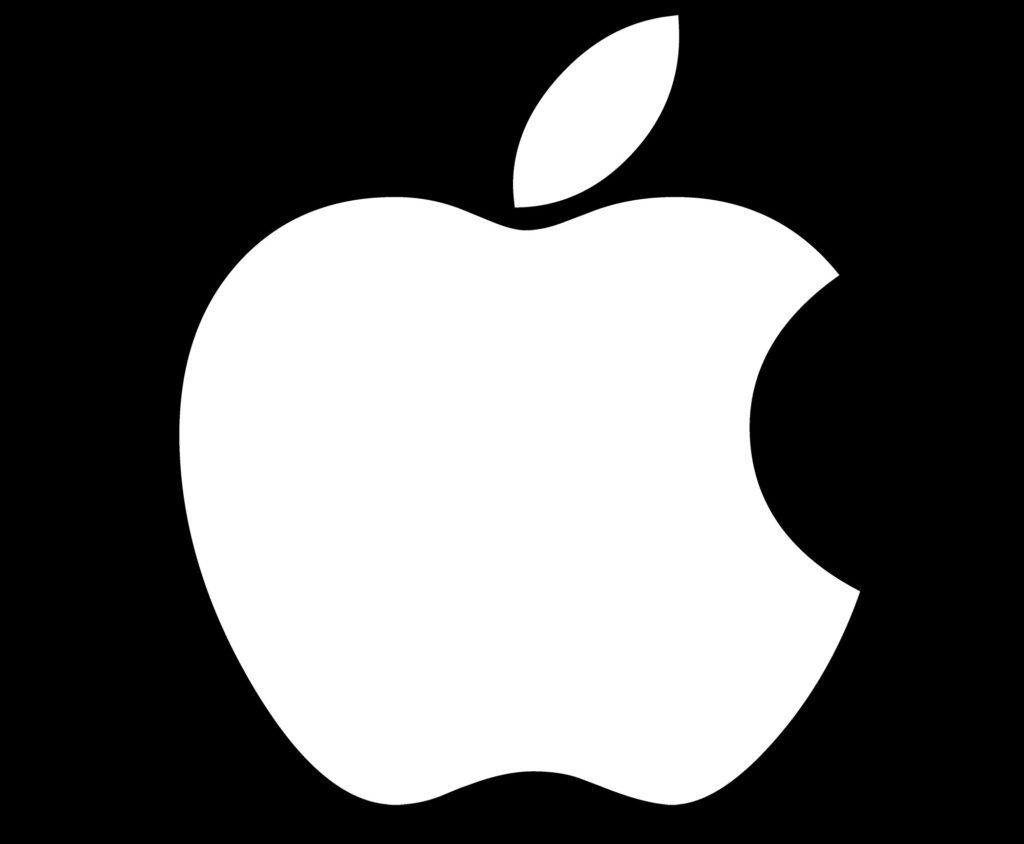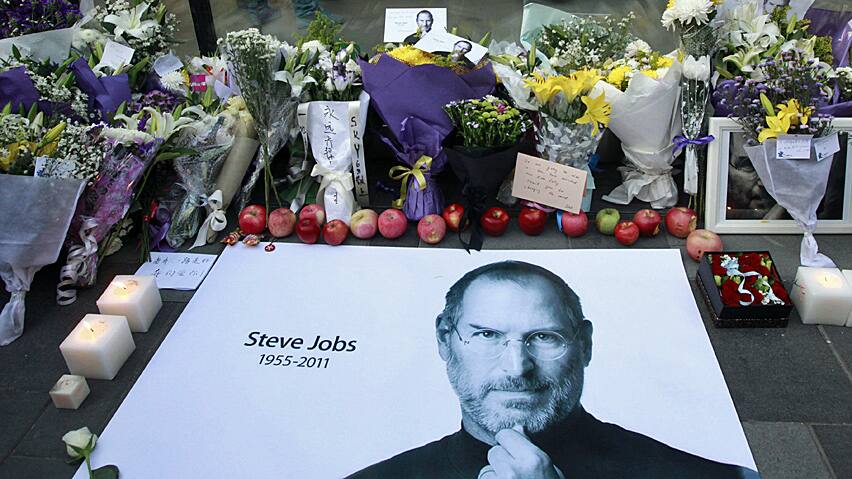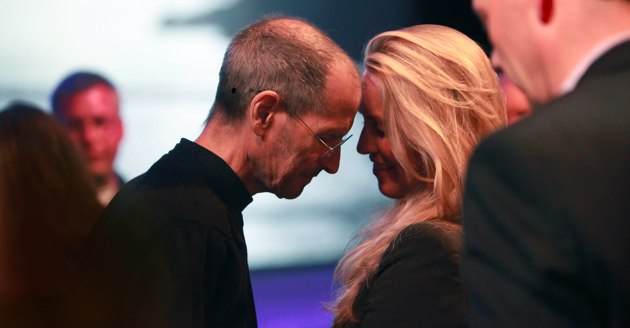
Introduction
Steven Paul Jobs was an American entrepreneur, industrial desiner, business magnet, media pioneer and investor. He was the co-founder, chairman, and CEO of Apple. and the founder, chairman, and CEO of NeXT.
Background
Family
Steven Paul Jobs was born in San Francisco, California, on February 24, 1955, to Joanne Carole Schieble and Abdulfattah Jandali. His cousin, Bassma Al Jandaly. some times after he was adopted by Clara and Paul Reinhold Jobs. Jobs was born on Muslim family. Jobs has a Biological Sisters Mona Simpson, noted that Schieble’s Catholic parents were unhappy that their daughter was with a Muslim.
Early Life

Schieble became pregnant with Jobs in 1954, when she and Jandali spent the summer with his family in Homs. According to Jandali, Schieble deliberately did not involve him in the process: “Without telling me, Joanne upped and left to move to San Francisco to have the baby without anyone knowing, including me.”
Schieble gave birth to Jobs in San Francisco on February 24, 1955, and chose an adoptive couple for him that was “Catholic, well-educated, and wealthy”, but the couple later changed their minds. He was then placed with Paul and Clara Jobs, who lacked wealth and college education, and Schieble refused to sign the adoption papers. She asked the court to find a different family, but consented when Paul and Clara pledged to fund his college education.
Childhood
Paul Jobs worked in several jobs that included a try as a machinist, several other jobs, and then “back to work as a machinist”.
Paul and Clara adopted Jobs’s sister Patricia in 1957, and by 1959, the family had moved to the Monta Loma neighborhood in Mountain View, California. Paul built a workbench in his garage for his son in order to “pass along his love of mechanics”. Jobs, meanwhile, admired his father’s craftsmanship “because he knew how to build anything. If we needed a cabinet, he would build it. When he built our fence, he gave me a hammer so I could work with him … I wasn’t that into fixing cars … but I was eager to hang out with my dad.” By the time he was ten, Jobs was deeply involved in electronics and befriended many of the engineers who lived in the neighborhood. He had difficulty making friends with children his own age, however, and was seen by his classmates as a “loner”.
Apple (1976–1985)

By March 1976, Wozniak completed the basic design of the Apple I computer and showed it to Jobs, who suggested that they sell it; Wozniak was at first skeptical of the idea but later agreed. In April of that same year, Jobs, Wozniak, and administrative overseer Ronald Wayne founded Apple Computer Company (now called Apple Inc.) as a business partnership in Jobs’s parents’ Crist Drive home on April 1, 1976. The operation originally started in Jobs’s bedroom and later moved to the garage. Wayne stayed briefly, leaving Jobs and Wozniak as the active primary cofounders of the company. The two decided on the name “Apple” after Jobs returned from the All One Farm commune in Oregon and told Wozniak about his time in the farm’s apple orchard. Jobs originally planned to produce bare printed circuit boards of the Apple I and sell them to computer hobbyists for $50 (equivalent to about $240 in 2021) each. To fund the first batch, Wozniak sold his HP scientific calculator and Jobs sold his Volkswagen van. Later that year, computer retailer Paul Terrell purchased 50 fully assembled Apple I units for $500 each. Eventually about 200 Apple I computers were produced in total.
A neighbor on Crist Drive recalled Jobs as an odd individual who would greet his clients “with his underwear hanging out, barefoot and hippie-like”. Another neighbor, Larry Waterland, who had just earned his PhD in chemical engineering at Stanford, recalled dismissing Jobs’s budding business compared to the established industry of giant mainframe computers with big decks of punchcards: “Steve took me over to the garage. He had a circuit board with a chip on it, a DuMont TV set, a Panasonic cassette tape deck and a keyboard. He said, ‘This is an Apple computer.’ I said, ‘You’ve got to be joking.’ I dismissed the whole idea.” Jobs’s friend from Reed College and India, Daniel Kottke, recalled that as an early Apple employee, he “was the only person who worked in the garage … Woz would show up once a week with his latest code. Steve Jobs didn’t get his hands dirty in that sense.” Kottke also stated that much of the early work took place in Jobs’s kitchen, where he spent hours on the phone trying to find investors for the company.
They received funding from a then-semi-retired Intel product marketing manager and engineer Mike Markkula. Scott McNealy, one of the cofounders of Sun Microsystems, said that Jobs broke a “glass age ceiling” in Silicon Valley because he’d created a very successful company at a young age. Markkula brought Apple to the attention of Arthur Rock, which after looking at the crowded Apple booth at the Home Brew Computer Show, started with a $60,000 investment and went on the Apple board. Jobs was not pleased when Markkula recruited Mike Scott from National Semiconductor in February 1977 to serve as the first president and CEO of Apple.
After Brennan returned from her own journey to India, she and Jobs fell in love again, as Brennan noted changes in him that she attributes to Kobun (whom she was also still following). It was also at this time that Jobs displayed a prototype Apple I computer for Brennan and his parents in their living room. Brennan notes a shift in this time period, where the two main influences on Jobs were Apple Inc. and Kobun. By early 1977, she and Jobs would spend time together at her home at Duveneck Ranch in Los Altos, which served as a hostel and environmental education center.
In April 1977, Jobs and Wozniak introduced the Apple II at the West Coast Computer Faire. It is the first consumer product to have been sold by Apple Computer. Primarily designed by Wozniak, Jobs oversaw the development of its unusual case and Rod Holt developed the unique power supply. During the design stage, Jobs argued that the Apple II should have two expansion slots, while Wozniak wanted eight. After a heated argument, Wozniak threatened that Jobs should “go get himself another computer”. They later agreed on eight slots. The Apple II became one of the first highly successful mass-produced microcomputer products in the world.
As Jobs became more successful with his new company, his relationship with Brennan grew more complex. In 1977, the success of Apple was now a part of their relationship, and Brennan, Daniel Kottke, and Jobs moved into a house near the Apple office in Cupertino. Brennan eventually took a position in the shipping department at Apple. Brennan’s relationship with Jobs deteriorated as his position with Apple grew, and she began to consider ending the relationship. In October 1977, Brennan was approached by Rod Holt, who asked her to take “a paid apprenticeship designing blueprints for the Apples”. Both Holt and Jobs believed that it would be a good position for her, given her artistic abilities. Holt was particularly eager that she take the position, and puzzled by her ambivalence toward it. Brennan’s decision, however, was overshadowed by the fact that she realized she was pregnant, and that Jobs was the father. It took her a few days to tell Jobs, whose face, according to Brennan, “turned ugly” at the news. At the same time, according to Brennan, at the beginning of her third trimester, Jobs said to her: “I never wanted to ask that you get an abortion. I just didn’t want to do that.” He also refused to discuss the pregnancy with her. Brennan turned down the internship and decided to leave Apple. She stated that Jobs told her “If you give up this baby for adoption, you will be sorry” and “I am never going to help you.” According to Brennan, Jobs “started to seed people with the notion that I slept around, and he was infertile, which meant that this could not be his child.” A few weeks before she was due to give birth, Brennan was invited to deliver her baby at the All One Farm. She accepted the offer. When Jobs was 23 (the same age as his biological parents when they had him) Brennan gave birth to her baby, Lisa Brennan, on May 17, 1978. Jobs went there for the birth after he was contacted by Robert Friedland, their mutual friend and the farm owner. While distant, Jobs worked with her on a name for the baby, which they discussed while sitting in the fields on a blanket. Brennan suggested the name “Lisa” which Jobs also liked and notes that Jobs was very attached to the name “Lisa” while he “was also publicly denying paternity”. She would discover later that during this time, Jobs was preparing to unveil a new kind of computer that he wanted to give a female name (his first choice was “Claire” after St. Clare). She stated that she never gave him permission to use the baby’s name for a computer and he hid the plans from her. Jobs worked with his team to come up with the phrase, “Local Integrated Software Architecture” as an alternative explanation for the Apple Lisa. Decades later, however, Jobs admitted to his biographer Walter Isaacson that “obviously, it was named for my daughter”.
When Jobs denied paternity, a DNA test established him as Lisa’s father. It required him to pay Brennan $385 (equivalent to about $1,000 in 2021) monthly in addition to returning the welfare money she had received. Jobs paid her $500 (equivalent to about $1,400 in 2021) monthly at the time when Apple went public and made him a millionaire. Later, Brennan agreed to interview with Michael Moritz for Time magazine for its Time Person of the Year special, released on January 3, 1983, in which she discussed her relationship with Jobs. Rather than name Jobs the Person of the Year, the magazine named the generic personal computer the “Machine of the Year”. In the issue, Jobs questioned the reliability of the paternity test, which stated that the “probability of paternity for Jobs, Steven… is 94.1%”. He responded by arguing that “28% of the male population of the United States could be the father”. Time also noted that “the baby girl and the machine on which Apple has placed so much hope for the future share the same name: Lisa”.
In 1978, at age 23, Jobs was worth over $1 million (equivalent to $4.15 million in 2021). By age 25, his net worth grew to an estimated $250 million (equivalent to $745 million in 2021). He was also one of the youngest “people ever to make the Forbes list of the nation’s richest people—and one of only a handful to have done it themselves, without inherited wealth.
In 1982, Jobs bought an apartment on the top two floors of The San Remo, a Manhattan building with a politically progressive reputation. Although he never lived there, he spent years renovating it thanks to I. M. Pei. In 2003, he sold it to U2 singer Bono.
In 1983, Jobs lured John Sculley away from Pepsi-Cola to serve as Apple’s CEO, asking, “Do you want to spend the rest of your life selling sugared water, or do you want a chance to change the world?”
In 1984, Jobs bought the Jackling House and estate, and resided there for a decade. Thereafter, he leased it out for several years until 2000 when he stopped maintaining the house, allowing weathering to degrade it. In 2004, Jobs received permission from the town of Woodside to demolish the house to build a smaller, contemporary styled one. After a few years in court, the house was finally demolished in 2011, a few months before he died.
Death

Jobs died at his Palo Alto, California, home around 3 p.m. on October 5, 2011, due to complications from a relapse of his previously treated islet-cell pancreatic neuroendocrine tumor. which resulted in respiratory arrest. He had lost consciousness the day before and died with his wife, children, and sisters at his side. His sister, Mona Simpson, described his death thus: “Steve’s final words, hours earlier, were monosyllables, repeated three times. Before embarking, he’d looked at his sister Patty, then for a long time at his children, then at his life’s partner, Laurene, and then over their shoulders past them. Steve’s final words were: ‘Oh wow. Oh wow. Oh wow.'” He then lost consciousness and died several hours later. A small private funeral was held on October 7, 2011, the details of which, out of respect for Jobs’s family, were not made public.
Apple and Pixar each issued announcements of his death. Apple announced on the same day that they had no plans for a public service, but were encouraging “well-wishers” to send their remembrance messages to an email address created to receive such messages. Apple and Microsoft both flew their flags at half-staff throughout their respective headquarters and campuses.
Bob Iger ordered all Disney properties, including Walt Disney World and Disneyland, to fly their flags at half-staff from October 6 to 12, 2011. For two weeks following his death, Apple displayed on its corporate Web site a simple page that showed Jobs’s name and lifespan next to his grayscale portrait. On October 19, 2011, Apple employees held a private memorial service for Jobs on the Apple campus in Cupertino. It was attended by Jobs’s widow, Laurene, and by Tim Cook, Bill Campbell, Norah Jones, Al Gore, and Coldplay. Some of Apple’s retail stores closed briefly so employees could attend the memorial. A video of the service was uploaded to Apple’s website.
California Governor Jerry Brown declared Sunday, October 16, 2011, to be “Steve Jobs Day”. On that day, an invitation-only memorial was held at Stanford University. Those in attendance included Apple and other tech company executives, members of the media, celebrities, politicians, and family and close friends of Jobs. Bono, Yo-Yo Ma, and Joan Baez performed at the service, which lasted longer than an hour. The service was highly secured, with guards at all of the university’s gates, and a helicopter overhead from an area news station. Each attendee was given a small brown box as a “farewell gift” from Jobs, containing a copy of the Autobiography of a Yogi by Paramahansa Yogananda.
Childhood friend and fellow Apple co-founder Steve Wozniak, former owner of what would become Pixar, George Lucas, former rival, Microsoft co-founder Bill Gates, and President Barack Obama all offered statements in response to his death.
At his request, Jobs was buried in an unmarked grave at Alta Mesa Memorial Park, the only nonsectarian cemetery in Palo Alto.
Marriage

In 1989, Jobs first met his future wife, Laurene Powell, when he gave a lecture at the Stanford Graduate School of Business, where she was a student. Soon after the event, he stated that Laurene “was right there in the front row in the lecture hall, and I couldn’t take my eyes off of her … kept losing my train of thought, and started feeling a little giddy.” After the lecture, he met her in the parking lot and invited her out to dinner. From that point forward, they were together, with a few minor exceptions, for the rest of his life.
Jobs proposed on New Year’s Day 1990 with “a fistful of freshly picked wildflowers”. They married on March 18, 1991, in a Buddhist ceremony at the Ahwahnee Hotel in Yosemite National Park. Fifty people, including Jobs’s father, Paul, and his sister Mona, attended. The ceremony was conducted by Jobs’s guru, Kobun Chino Otogawa. The vegan wedding cake was in the shape of Yosemite’s Half Dome, and the wedding ended with a hike and Laurene’s brothers’ snowball fight. Jobs reportedly said to Mona: “You see, Mona […], Laurene is descended from Joe Namath, and we’re descended from John Muir.”
Jobs’s and Powell’s first child was born in 1991. Jobs’s father, Paul, died a year and a half later, on March 5, 1993. Jobs’s childhood home remains a tourist attraction and is currently owned by his stepmother (Paul’s second wife), Marilyn Jobs.
Jobs and Powell had two more children; Eve Jobs, born in 1998, is a fashion model. The family lived in Palo Alto, California.
Although a billionaire, Jobs made it known that, like Bill Gates, he had stipulated that most of his monetary fortune would not be left to his children. Both men had limited their children’s access, age appropriate, to social media, computer games, and the Internet.
Philanthropy
Jobs’s views and actions on philanthropy and charity are a public mystery. He maintained privacy over his occasional few such actions which were publicly known. He has been a key figure in public discussions about societal obligations of the wealthy and powerful. Through his career, the media investigated and criticized him and Apple as unusually and inexplicably mysterious or absent among powerful leaders and especially billionaires. His name is absent from the Million Dollar List of all large global philanthropy. Some have speculated about his possible secret role in large anonymous donations.
Mark Vermilion, former charitable leader for Joan Baez, Apple, and Jobs, attributed Jobs’s lifelong minimization of direct charity to his perfectionism and limited time. Jobs, Vermilion, and supporters said over the years that corporate products were Jobs’s superior contributions to culture and society instead of direct charity. In 1985, Jobs said, “You know, my main reaction to this money thing is that it’s humorous, all the attention to it, because it’s hardly the most insightful or valuable thing that’s happened to me.”
Shortly after leaving Apple, he formed the charitable Steven P. Jobs Foundation, led by Mark Vermilion, hired away from Apple’s community leadership. Jobs wanted a focus on nutrition and vegetarianism but Vermilion wanted social entrepreneurship. That year, Jobs soon launched NeXT and closed the foundation with no results. Upon his 1997 return to Apple, Jobs optimized the failing company to the core, such as eliminating all philanthropic programs, never to be restored. In 2007, Stanford Social Innovation Review magazine listed Apple among “America’s least philanthropic companies”. A few months after another unflattering news report, Apple started a program to match employees’ charitable gifts. Jobs has declined to sign The Giving Pledge, launched in 2010 by Warren Buffett and Bill Gates for fellow billionaires. He donated $50 million to Stanford hospital and contributed to efforts to cure AIDS. Bono reported “tens of millions of dollars” given by Apple while Jobs was CEO, to AIDS and HIV relief programs in Africa, which inspired other companies to join.
Honors and awards
- 1985: National Medal of Technology (with Steve Wozniak), awarded by US President Ronald Reagan.
- 1987: Jefferson Award for Public Service.
- 1989: Entrepreneur of the Decade by Inc.
- 1991: Howard Vollum Award from Reed College.
- 2004–2010: Listed among the Time 100 Most Influential People in the World on five separate occasions.
- 2007: Named the most powerful person in business by Fortune magazine.
- 2007: Inducted into the California Hall of Fame, located at The California Museum for History, Women and the Arts.
- 2012: Grammy Trustees Award, an award for those who have influenced the music industry in areas unrelated to performance.
- 2012: Posthumously honored with an Edison Achievement Award for his commitment to innovation throughout his career.
- 2013: Posthumously inducted as a Disney Legend.
- 2017: Steve Jobs Theatre opens at Apple Park.
- 2022: Posthumously awarded the Presidential Medal of Freedom by US President Joe Biden, the country’s highest civilian honor.





